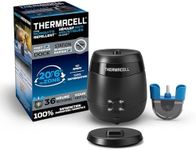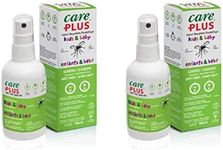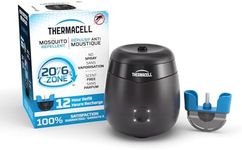Buying Guide for the Best Baby Mosquito Repellents
Choosing a baby mosquito repellent is all about ensuring your child's safety and comfort while effectively keeping mosquitoes at bay. Babies have delicate skin and developing immune systems, so it's important to select a product that is gentle, non-toxic, and suitable for their age. When shopping, focus on the type of repellent, the active ingredients, how it's applied, and how long it lasts. Always read labels carefully and consider your baby's specific needs, such as skin sensitivity or allergies. Remember, the best repellent is one that balances safety with effectiveness and fits your daily routine.Active IngredientThe active ingredient is the main chemical or natural substance that repels mosquitoes. This is crucial because some ingredients are safer for babies than others. Common options include DEET, picaridin, IR3535, and natural oils like citronella or eucalyptus. For babies, it's generally recommended to avoid strong chemicals and opt for milder, baby-safe ingredients. If your baby has sensitive skin or allergies, natural options may be preferable, but always check for any potential irritants. Your choice should be guided by your comfort level with chemicals and your baby's skin sensitivity.
Formulation TypeFormulation type refers to how the repellent is delivered, such as sprays, lotions, creams, patches, or wearable bands. This matters because some forms are easier to apply on wiggly babies or are less likely to be ingested if your baby puts their hands in their mouth. Sprays and lotions offer direct skin protection but require careful application, while patches and bands are less messy but may not provide full coverage. Choose a formulation that matches your baby's age, activity level, and your preference for ease of use.
Duration of ProtectionDuration of protection tells you how long the repellent will keep mosquitoes away after application. This is important for planning outings or overnight protection. Some products last only a couple of hours, while others can protect for up to 8 hours. Shorter durations may require frequent reapplication, which can be inconvenient, especially for babies. Consider how long you'll need protection—short trips may only need a brief effect, while longer outdoor activities call for longer-lasting repellents.
Age SuitabilityAge suitability indicates the minimum age for which the repellent is considered safe. This is critical because some ingredients are not recommended for infants under a certain age, often 2 or 6 months. Always check the label for age recommendations and consult your pediatrician if unsure. Pick a product that is specifically labeled as safe for your baby's age to avoid any health risks.
Skin Sensitivity and Hypoallergenic PropertiesSkin sensitivity and hypoallergenic properties refer to how gentle the repellent is on delicate baby skin and whether it is less likely to cause allergic reactions. Babies can have unpredictable skin reactions, so choosing a hypoallergenic and dermatologist-tested product can help prevent rashes or irritation. If your baby has a history of eczema or sensitive skin, prioritize products that are fragrance-free and tested for sensitive skin.
Ease of Application and RemovalEase of application and removal is about how simple it is to put the repellent on your baby and wash it off afterward. This matters because you want to minimize fuss and ensure the product doesn't linger on the skin longer than necessary. Some repellents are easy to wipe off with a damp cloth, while others may need soap and water. Choose a product that fits your daily routine and makes both application and cleanup stress-free.


















